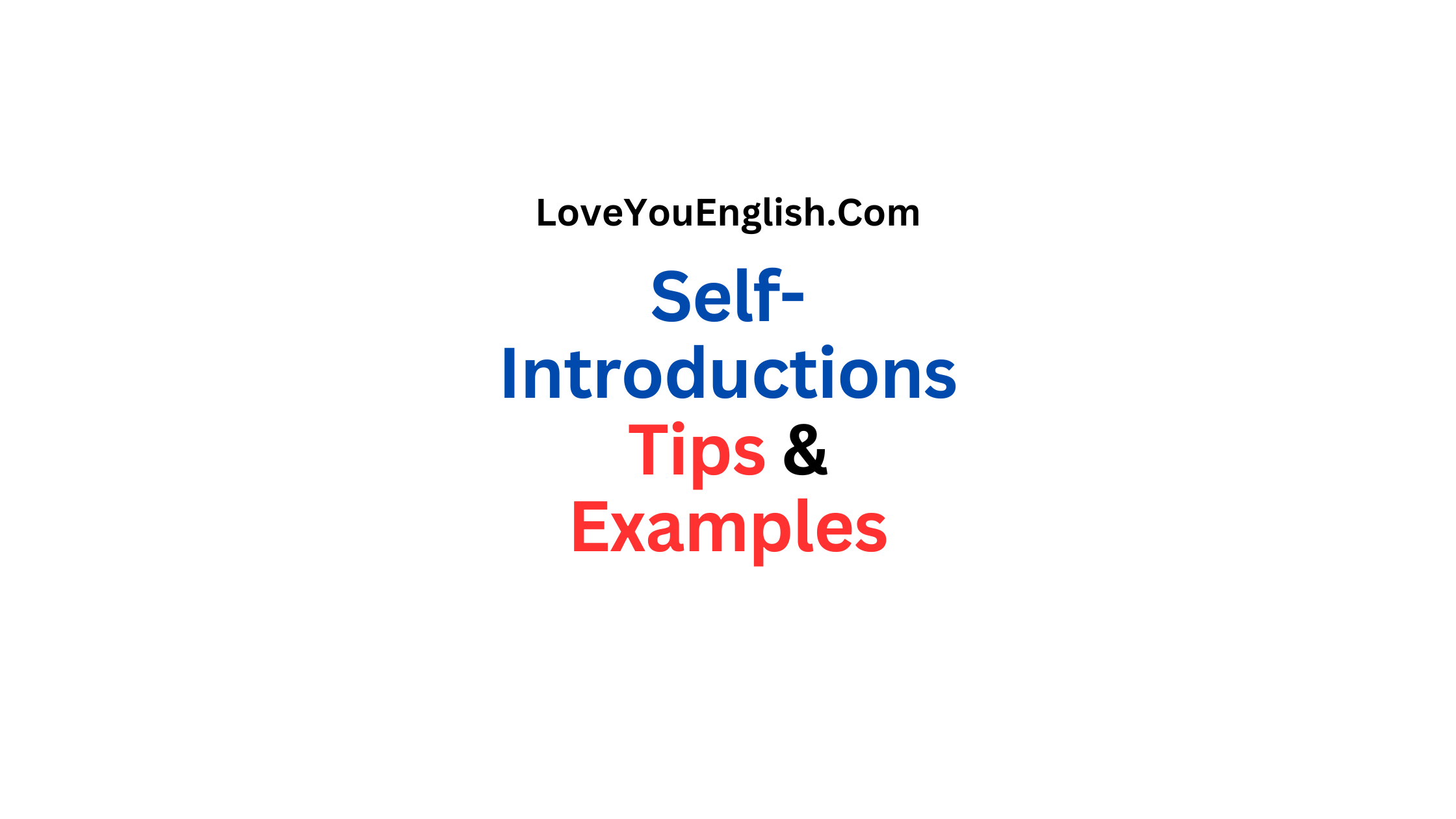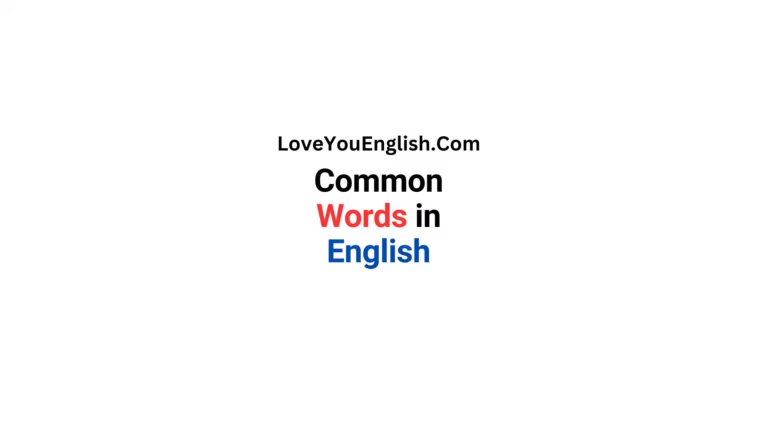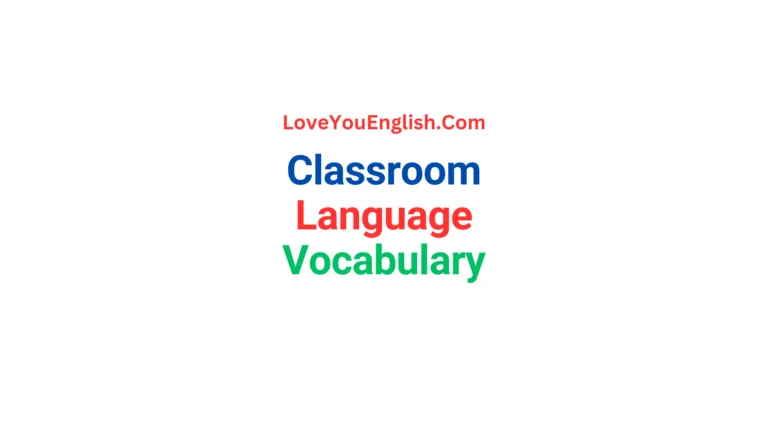Self-Introductions with Tips and Examples
We all need to introduce ourselves at some point — at school, at work, or when we meet new people. A good self-introduction can help you:
-
Make a good first impression
-
Meet new friends or connections
-
Show who you are and what you do
-
Feel more confident
I will help you learn how to introduce yourself clearly and confidently. Let’s get started!
Why a Good Self-Introduction Is Important
-
First Impressions Matter
People often remember how you first introduce yourself. -
Helps You Connect
A good introduction makes it easy for others to talk to you. -
Shows Your Strengths
In job interviews or meetings, you can share your skills and goals. -
Builds Confidence
When you practice, you feel less nervous. -
Makes You Memorable
A unique or fun fact can help people remember you.
What to Include in Your Self-Introduction
Here are 5 simple things to say when you introduce yourself:
-
Your Name – Say your full name clearly.
-
Your Background – Your job, studies, or where you’re from.
-
Something Interesting About You – A hobby, interest, or fun fact.
-
Your Purpose – Why you’re at the event, meeting, or place.
-
Common Ground – Say something you share with others, if possible.
Tips to Make a Great Introduction
-
Keep It Short
Usually 30 seconds to 2 minutes is enough. -
Change It for Each Situation
Your intro at a party will be different from your intro at a job interview. -
Practice, But Be Natural
Don’t memorize every word. Just practice the main points. -
Start With a Hook
Say something interesting to get attention. -
Use Good Body Language
Make eye contact, smile, and stand or sit with confidence. -
Be Honest and Positive
Talk about your strengths in a true and friendly way. -
Invite People to Talk to You
End with a question or an invitation to chat more.
Examples of Self-Introduction (Easy English)
🧑💼 Job Interview
“Hi, I’m Sarah. I have 5 years of experience in digital marketing. I enjoy writing stories that help brands connect with people. I’m excited to join your team and share my skills.”
🤝 Networking Event
“Hello, I’m Alex. I’m an engineer who works on making cities more green and clean. I love meeting people who care about the environment. What do you do?”
🎓 First Day of Class
“Hi everyone, I’m Emma. I study Psychology and Creative Writing. I enjoy learning how stories and the mind work together. I also run a small poetry group on weekends.”
🥳 Social Gathering
“Hey, I’m Michael. I just moved here from Chicago. I work in tech and love cooking. I’m looking for new friends — any other food lovers here?”
🧑🔬 Professional Conference
“Good morning, I’m Dr. Amelia. I study how to make vaccines better. Today I’m sharing my research on mRNA vaccines. I’d love to talk with anyone working in the same field.”
💻 Online Meeting
“Hi, I’m Carlos from Barcelona. I design apps and websites. I enjoy making things easy to use. I’m happy to learn and share ideas with you all.”
🚀 Elevator Pitch
“Hi, I’m Zoe. I started a company that makes eco-friendly packaging from seaweed. We help reduce plastic waste. Looking to connect with people who care about the planet!”
🏢 First Day at Work
“Hello team, I’m Ryan, your new Project Manager. I’ve led many IT projects and love working with teams. Outside work, I take photos and have a dog named Charlie.”
🎓 Graduate School Application
“Hi, I’m Olivia. I want to study marine biology. I’ve worked on coral reef projects and written papers about saving coral. I’m excited to learn more and do research.”
💕 Dating App Profile
“Hey, I’m Jake, a graphic designer who loves music, bikes, and road trips. I’m looking for someone who enjoys art, fun, and deep talks over coffee.”
How to Introduce Yourself in Different Cultures
When speaking to people from other countries, keep this in mind:
-
Learn Local Customs – Like how to greet or shake hands.
-
Use Titles – In some cultures, it’s polite to say “Mr.” or “Dr.”
-
Be Careful with Space – Some people like space, some are more close.
-
Avoid Personal Topics – Like money, politics, or religion.
-
Speak Clearly – Try to speak slowly and clearly in English.
Mistakes to Avoid
-
Talking Too Much – Don’t give too much detail at first.
-
Being Too Shy or Too Proud – Be confident, but not boastful.
-
Going Off-Topic – Stick to your key points.
-
Negative Talk – Avoid saying bad things about yourself or others.
-
No Preparation – Always be ready with a short intro.
-
Bad Body Language – Don’t cross arms, look down, or frown.
Ways to Make Your Introduction Stand Out
Want to make your introduction extra special? Try this:
-
Tell a Short Story – A short story about your life or experience.
-
Ask a Question – Something interesting to start a conversation.
-
Use a Quote – A short line that inspires or reflects your beliefs.
-
Show a Skill – If possible, do something (like a magic trick or design).
-
Use Humor – A light joke can make people smile.
-
Create a Tagline – A fun or smart sentence about yourself.
-
Use a Prop – Something to show or share (like a product or photo).
After Your Introduction – What Next?
Don’t stop after your intro. Keep the conversation going:
-
Ask Questions – Show interest in others.
-
Listen Well – Pay attention and respond kindly.
-
Offer Help – Share ideas, contacts, or tips.
-
Share Contact Info – Give your card or connect online.
-
Follow Up – Message or email later to stay in touch.
Final Thoughts
Introducing yourself is a very useful life skill. A good introduction can:
-
Help you meet people
-
Start new opportunities
-
Make you feel more confident
Just remember:
✅ Be clear and honest
✅ Keep it short and friendly
✅ Practice often
✅ Change it based on the situation
✅ Show who you are with confidence
Everyone has a story — what’s yours?
Frequently Asked Questions
1. How do you introduce yourself professionally in 30 seconds?
A 30-second professional introduction, often called an “elevator pitch,” should include four key elements:
Start with your name and role: “Hi, I’m Sarah, a digital marketing specialist.”
Mention your experience or expertise: “I have 5 years of experience helping brands grow their online presence through content strategy.”
Add your unique value: “I specialize in turning complex ideas into engaging stories that connect with audiences.”
End with your goal or invitation: “I’m excited to learn more about your work” or “I’d love to discuss how we can collaborate.”
Keep it conversational, not rehearsed. Practice the main points rather than memorizing word-for-word. Smile, maintain eye contact, and speak with confidence. Adjust your introduction based on your audience—what you say at a networking event differs from a job interview. The goal is to be memorable while inviting further conversation.
2. What should I say when introducing myself in a new job?
When introducing yourself on your first day at work, include these essential elements:
Your name and new role: “Hello everyone, I’m Ryan, your new Project Manager.”
Relevant experience: “I’ve led several IT projects and have experience in agile methodologies.”
What you bring to the team: “I love collaborating with teams to deliver successful projects on time.”
A personal touch: “Outside work, I enjoy photography and spending time with my dog, Charlie.”
Enthusiasm and openness: “I’m excited to work with all of you and learn more about what you do.”
Keep it brief (1-2 minutes), positive, and genuine. Avoid oversharing personal details or coming across as boastful. Show interest in your colleagues by asking about their roles afterward. Remember, this first introduction sets the tone for your workplace relationships, so be friendly, professional, and approachable. Follow up by having individual conversations with team members to build deeper connections.
3. What are the 5 things you should include in a self-introduction?
Every effective self-introduction should contain these five core components:
1. Your Name: Say your full name clearly and confidently. If your name is difficult to pronounce, say it slowly or offer a pronunciation tip.
2. Your Background: Share relevant information about your job, studies, or where you’re from, depending on the context.
3. Something Interesting About You: Include a hobby, passion, or unique fact that makes you memorable. This humanizes you beyond your professional role.
4. Your Purpose: Explain why you’re at the event, meeting, or gathering. Are you looking to network, learn, collaborate, or make friends?
5. Common Ground: If possible, mention something you share with your audience or the person you’re meeting. This creates instant connection and rapport.
The key is adapting these five elements to your situation. A job interview requires more professional details, while a social gathering allows for more personal information. Practice including all five elements in a natural, conversational way that feels authentic to who you are.
4. How can I make my self-introduction more interesting and memorable?
To stand out and be remembered, try these creative techniques:
Tell a short story: Instead of just listing facts, share a brief, relevant story about your journey or an experience that shaped you.
Start with a hook: Open with an interesting question, surprising fact, or bold statement that grabs attention immediately.
Create a personal tagline: Develop a memorable one-liner that captures your essence, like “I turn data into stories” or “I design apps that feel like magic.”
Use appropriate humor: A light, tasteful joke or self-deprecating comment can make people smile and remember you.
Share your “why”: Explain your passion or purpose—why you do what you do—rather than just what you do.
Include specific details: Instead of “I like traveling,” say “I’ve hiked in 15 countries and collect local recipes.”
Ask engaging questions: End with a thought-provoking question that invites conversation and shows you’re interested in others.
The most memorable introductions balance professionalism with personality. They’re authentic, confident, and give people a reason to want to know more about you.
5. What mistakes should I avoid when introducing myself?
Common self-introduction mistakes that can hurt your first impression include:
Talking too much: Rambling for 5-10 minutes overwhelms people. Keep it to 30 seconds-2 minutes depending on the context.
Being too vague: Saying “I do some marketing stuff” is forgettable. Be specific about what you do and what makes you unique.
Poor body language: Crossed arms, avoiding eye contact, slouching, or fidgeting sends negative signals. Stand tall, smile, and engage.
Sounding rehearsed or robotic: Memorizing every word makes you seem stiff. Practice the key points but deliver naturally.
Negativity: Complaining about your previous job, apologizing excessively, or self-deprecating too much creates a bad impression.
No preparation: Being caught off-guard and stumbling through an introduction shows lack of professionalism.
Going off-topic: Sharing irrelevant personal details or wandering from your main points confuses listeners.
Being too humble or too boastful: Balance confidence with authenticity—own your achievements without bragging.
The solution? Prepare a flexible introduction template, practice it regularly, and adapt it to each situation while staying genuine and positive.
6. How should I introduce myself differently in casual vs. professional settings?
Understanding context is crucial for effective introductions. Here’s how to adapt:
Professional Settings (Job Interviews, Conferences, Networking):
- Use your full name and professional title
- Focus on relevant skills, experience, and achievements
- Mention education or certifications if applicable
- State your professional goals or what you’re seeking
- Keep tone polite, confident, and somewhat formal
- Example: “I’m Dr. Amelia Chen, a vaccine researcher specializing in mRNA technology. I’m presenting findings on improving vaccine efficacy today.”
Casual Settings (Parties, Social Gatherings, Dating Apps):
- First name is usually sufficient
- Share hobbies, interests, and personal passions
- Include fun facts or unique experiences
- Be more relaxed and conversational in tone
- Show your personality and sense of humor
- Example: “Hey, I’m Jake! I’m a graphic designer who loves live music, cycling, and spontaneous road trips. Anyone else here into outdoor adventures?”
The overlap: Both settings benefit from authenticity, confidence, appropriate body language, and showing genuine interest in others. The difference lies in what information you emphasize and how formally you present it. Always read the room and match your introduction style to the energy and expectations of your environment.
Explore more topics:
- Top Online Resources to Improve Your English Skills
- How to Choose a College to Achieve Your Goals
- Ebook Reader Online: Your Gateway to a World of Books
- How to Write a Blog – Tips & Techniques







